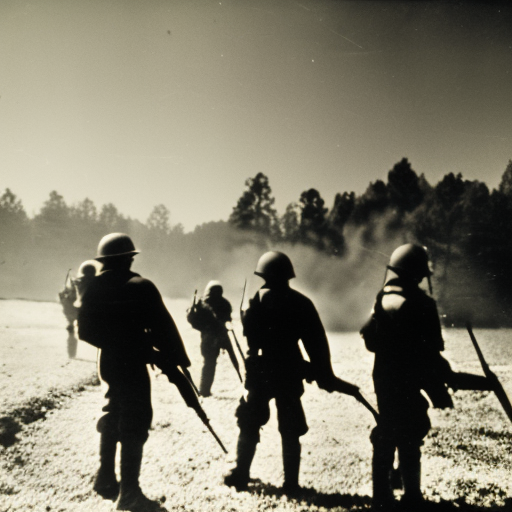Battle of Marciano: A Decisive Clash in the Italian Wars
The Battle of Marciano, also known as the Battle of Scannagallo, took place on August 2, 1554, during the Italian Wars. It was a decisive clash between the forces of the Republic of Siena and the combined armies of the Holy Roman Empire and the Republic of Florence. The battle resulted in a resounding victory for the imperial and Florentine forces, leading to the fall of Siena and the end of its independence.
The Context: Italian Wars and the Struggle for Power
The Italian Wars were a series of conflicts fought between various European powers for control over the Italian peninsula during the 15th and 16th centuries. These wars were characterized by shifting alliances and frequent invasions, as different states sought to expand their territories and influence in the region. The Battle of Marciano was a significant event in this broader context, as it marked a turning point in the struggle for power in Italy.
The Prelude: Siena’s Resistance and the Siege
Siena, a city-state in Tuscany, had long been a rival of Florence, its powerful neighbor. In the early 16th century, Siena found itself caught in the crossfire of the Italian Wars, with both the Holy Roman Empire and the Republic of Florence vying for control over the city. In 1552, Siena was besieged by the Florentine army, led by the renowned military commander Piero Strozzi. Despite facing a blockade and severe food shortages, the Sienese held out for nearly two years, thanks to their strong fortifications and the support of Spanish and French troops.
The Battle: The Florentine-Imperial Alliance Prevails
In the summer of 1554, the imperial army, commanded by the experienced general Gian Giacomo Medici, arrived to reinforce the Florentine troops. The combined forces of the Holy Roman Empire and the Republic of Florence significantly outnumbered the defenders of Siena. On August 2, the imperial and Florentine armies launched a coordinated attack on the Sienese positions.
The battle began with a fierce artillery bombardment, followed by a frontal assault on the walls of Siena. The defenders fought valiantly, but they were ultimately overwhelmed by the superior numbers and firepower of the attackers. The Sienese army suffered heavy casualties and was forced to retreat to the city’s central fortress, the Fortezza Medicea.
The Aftermath: Fall of Siena and the End of Independence
Realizing the futility of further resistance, the Sienese leaders negotiated a surrender with the imperial and Florentine commanders. The terms of the surrender were harsh: Siena lost its independence and was incorporated into the Grand Duchy of Tuscany, ruled by the Medici family. The city’s fortifications were partially demolished, and many of its artworks and treasures were looted or destroyed.
The Battle of Marciano had far-reaching consequences for the Italian Wars. It marked the end of Siena as an independent city-state and solidified the power of the Medici family in Tuscany. The victory also strengthened the position of the Holy Roman Empire and the Republic of Florence in their ongoing struggle for dominance in Italy.
In conclusion, the Battle of Marciano was a pivotal event in the Italian Wars, resulting in the fall of Siena and the end of its independence. The battle showcased the military prowess of the imperial and Florentine forces, who successfully besieged and conquered the well-fortified city. The victory had significant political and territorial implications, shaping the balance of power in Italy during this tumultuous period.












